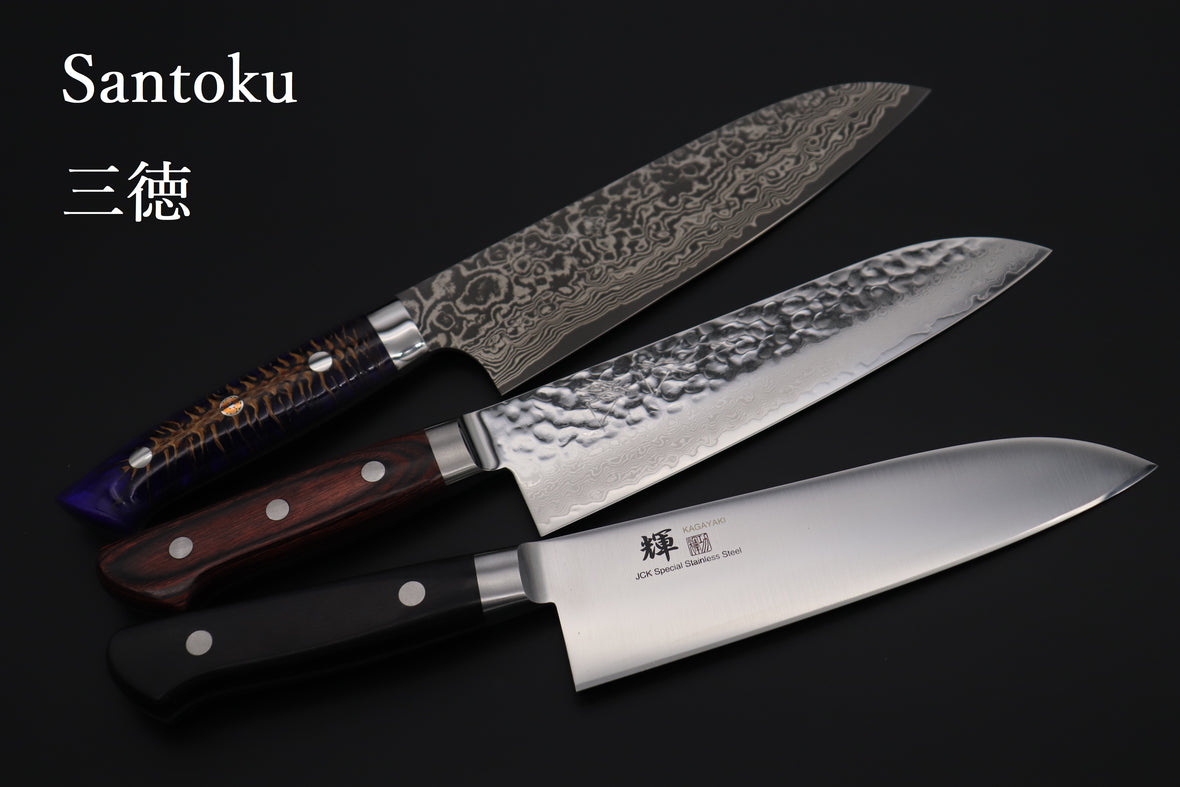We Offer DHL EXPRESS Flat Rate Shipping Worldwide. Just $10 USD for US, Canada, Australia, Asian countries. US$15 for Europe and other Countries in the world

The Santoku, which translates in to English as either “three-purpose" or “three virtues”, gained this name because it is well suited to cutting meat, fish, and vegetables. Santoku knives are often recommended as a multi-purpose kitchen knife for home cooks, and it is more commonly found in Japanese households than Gyuto knives.
The Santoku generally has a slightly taller blade than a similarly sized Gyuto or Petty knife. This provides a little more clearance for the knuckles of your knife hand when cutting directly above a cutting board, and also provides a good surface for the knuckles of your free hand to guide the blade during ‘tap chopping’, ‘push cutting' and ‘pull cutting'. However, it also makes the Santoku slightly less agile than narrower knives. A distinct characteristic of the Santoku is the curved Kamagata (Literally, “sickle-shaped”) tip, which forms a wider angle than the tip of a Gyuto or Petty knife. Relatively speaking, this results in a tip which is slightly less prone to breaking, but is also less nimble and precise. The Santoku can also cut and slice very efficiently with the blade edge kept parallel with to the cutting board, especially if the downward cutting motion is accompanied by either a small push or pull movement, which helps to initiate the cut.
Santoku knives are typically available in blade lengths with the 165mm and 180mm. For customers who prefer the Japanese traditional wooden handle, we also offer several Wa-santoku, which are available in both single bevel edged and double bevel edged varieties.
To learn more about the Santoku knife and see our recommended models, visit our Santoku Blog.
It offers detailed insights into its versatility, balanced design, and the craftsmanship behind this essential Japanese kitchen knife.